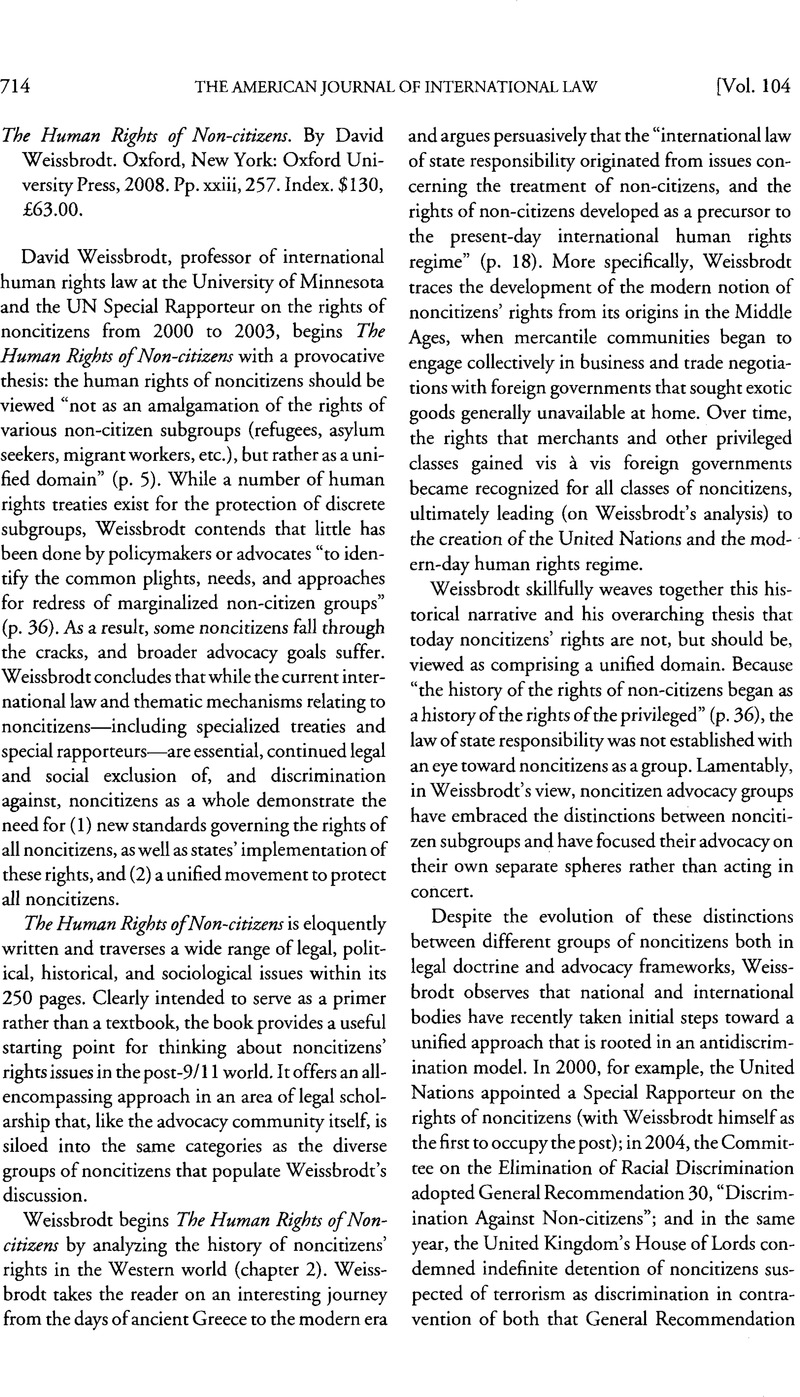No CrossRef data available.
Published online by Cambridge University Press: 27 February 2017

1 Girls, Yean & Bosico v. Dominican Republic, Inter-Am Ct. H.R. (Ser. C) No. 130 (Sept. 8, 2005)Google Scholar, at http://www.corteidh.or.cr/docs/casos/articulos/seriec_130_%20ing.pdf.
2 For example, on its Frequently Asked Questions Web page (http://www.refugeecouncil.org.au/arp/faqs.html#dif-rm), the Refugee Council of Australia, a leading national refugee organization, answers the question “What is the difference between a refugee and a migrant?” by explaining that refugees do not have a choice to come to Australia or to leave, and by arguing that because “refugees and migrants are different groups of people, with different prearrival experiences, it is important that the distinction be made in the services provided.”
3 Archibold, Randal C., Arizona Enacts Stringent Law on Immigration , N.Y. Times, Apr. 23, 2010 Google Scholar, at A1.
4 Juridical Condition and Rights of the Undocumented Migrants, Advisory Opinion OC-18/03, Inter- Am. Ct. H.R. (ser. A) No. 18 (Sept. 27, 2003).
5 See Charlotte, Bunch, Women’s Rights as Human Rights: Toward a Re-vision of Human Rights , 12 Hum. Rts. Q. 486 (1990)Google Scholar; Hilary, Charlesworth & Christine, Chinkin, The boundaries of International Law: A Feminist Analysis (2000)Google Scholar; Laura, Reanda, Human Rights and Women’s Rights: The United Nations Approach , 3 Hum. Rts. Q. 11 (1981)Google Scholar; Patricia, Palacios Zuloaga, The Path to Gender Justice in the Inter-American Court of Human Rights , 17 Tex. J. Women & L. 227 (2008)Google Scholar.